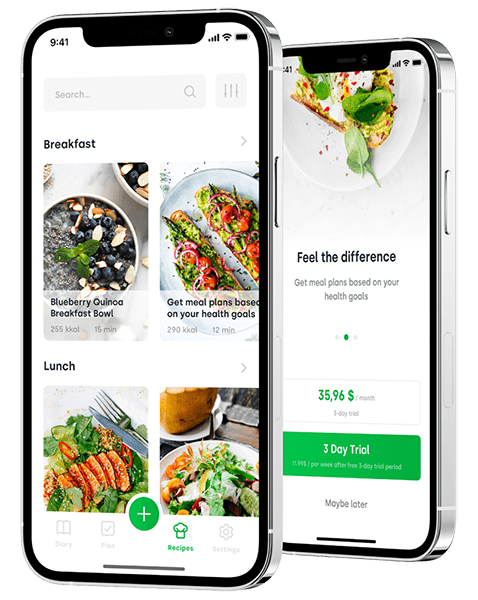
This mobile app designed to be the all in one solution for improving the users’ eating habits. It is an essential tool for losing weight, building muscles and developing an effective diet plan. This healthy app is a simple way for users to reach their healthy eating goals. It includes the possibility of using calorie tracker, macros calculator, carb & protein counter. In addition to that, many healthy recipes available within the app give users some additional insights into how to lose weight.
Imagine you’re developing a mobile app focused on health and wellness, with features for fitness tracking, nutrition advice, and mental health support. To ensure the app resonates and effectively reaches its users, it’s crucial to define a clear target audience. Here’s an example of a detailed target audience for such an app:
Primary Target Audience: Millennials and Gen Z Health Enthusiasts
Demographics:
- Age: 18-35 years old
- Gender: All genders
- Location: Primarily urban and suburban areas, with a focus on English-speaking countries
- Income Level: Middle to high income, able to afford app subscriptions or in-app purchases for premium features
- Education Level: College-educated or pursuing higher education
Psychographics:
- Lifestyle: Health-conscious, prioritizes well-being and personal development. Many are balancing busy schedules but value maintaining a healthy lifestyle.
- Interests: Fitness, clean eating, mental health, mindfulness, and sustainability.
- Values: This group values convenience, personalization, and accessibility. They seek products that fit seamlessly into their daily routines, and they favor brands that promote self-care, transparency, and eco-friendliness.
Behavioral Traits:
- Technology Usage: Highly active on social media (Instagram, TikTok, YouTube) and uses mobile apps daily. Likely to engage with wellness content online and actively seeks new wellness trends.
- Health Habits: Engages in regular exercise, tracks diet and fitness, and is interested in self-improvement. May already use other wellness apps but is open to exploring new ones if they offer unique features or better personalization.
- Pain Points: Time constraints, information overload, and difficulty maintaining consistency in wellness routines. They seek a solution that is easy to use, provides tailored advice, and can keep them motivated.
Secondary Target Audience: Busy Professionals Seeking Work-Life Balance
Demographics:
- Age: 35-50 years old
- Gender: All genders
- Location: Urban and suburban areas, with a focus on English-speaking countries
- Income Level: Middle to high income, willing to invest in wellness tools that enhance work-life balance
- Education Level: College-educated, with many in corporate or professional careers
Psychographics:
- Lifestyle: Time-poor but health-aware. These users seek tools to help them integrate wellness practices into their busy schedules.
- Interests: Productivity, mindfulness, stress reduction, balanced lifestyle, and self-care.
- Values: Efficiency, quality, and a desire for practical, reliable tools that can be seamlessly integrated into their lives. They value products that support mental health, stress management, and work-life balance.
Behavioral Traits:
- Technology Usage: Regular users of productivity and wellness apps. Likely to use fitness trackers and rely on apps to streamline their daily routines.
- Health Habits: Interested in sustainable health habits but may struggle with consistency due to workload. Likely to engage in moderate physical activity, such as yoga, walking, or occasional gym sessions.
- Pain Points: Stress, lack of time, difficulty balancing professional and personal life. They need a wellness app that’s simple, goal-oriented, and offers quick, effective solutions for stress and productivity management.
By understanding these two audience segments, the app can cater to their unique needs with features like quick guided meditations, personalized fitness plans, and easy meal prep tips.